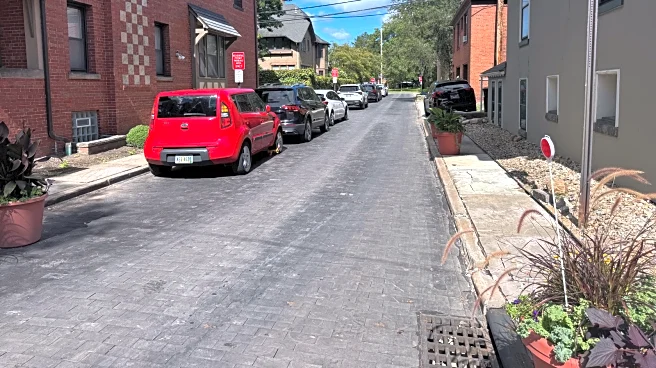
Cleveland, Ohio gets an undeserved bad rep from people who have never visited the amazing city. There are surprises around every turn. Take, for example, this oddity in transportation that I stumbled upon this weekend while walking to the Cleveland Museum of Art—among the highest rated art museums in the country—one of just five remaining paved wood block streets remaining in the United States. This is Hessler Court, a short 275 foot long section of road between Hessler Road and Bellflower Road on Cleveland's
east side. It's constructed of about 19,000 blocks of Norfolk pine brined in creosote and stood on end. The city spent a week re-paving this road in 2024, and it's still looking pretty solid despite the harsh Great Lakes winters.
Wood block pavement was once quite a popular way to construct new streets. Believed to have originated in the 14th century, so-called Nicolson pavement grew to prominence in the early 1800s as it provided a smoother surface than cobblestones, and wood was much more prevalent than stone. Obviously this doesn't matter anymore, but wood paved streets were also quieter under the many hooves of horse traffic than cobbles or brick, and preferred in residential neighborhoods. Repair was also much easier than cobblestone, as any pot holes could quickly be filled in with fresh lumber. This style of road paving once dominated the American and European roadways, but quickly fell away as cheaper concrete and asphalt became de rigueur.
Read more: Save Your Engine: 5 Tips For Preventing And Cleaning Carbon Buildup
Bricked Up

Hessler Court itself is named after Emory Melton Hessler, a Civil War enlistee in the 1st Regiment Ohio Volunteer Light Artillery working as hospital staff for nearly three years. His house still stands on the corner of the two streets bearing his name, and the wood paved street was believed to have been his personal driveway until it was given over to the city in 1908. The wood block paved court has been maintained under the Cleveland Landmark Commission since it was dedicated in 1975.
If you're looking for other wood block paved roads in the U.S. your best bet is Chicago, where a handful of alleys are still paved this way. Minneapolis has North 8th Ave, though much of the street has been coated in asphalt. Pennsylvania has a pair with Philly's Camac Street and Pittsburgh's Roslyn Place for the yinzers.
There is definitely a reason we don't pave our streets with wood anymore, but I'm glad that my city has a tiny slice of the way things used to be. It's just a reminder that not every piece of modernization is necessarily better than what replaced it. Sure asphalt is cheaper and arguably stays smoother for longer, but repairs can't be affected by just anybody with a home woodworking shop, and that's got to count for a point in favor of Nicolson roads.
I just thought it was neat.
Want more like this? Join the Jalopnik newsletter to get the latest auto news sent straight to your inbox...
Read the original article on Jalopnik.

















